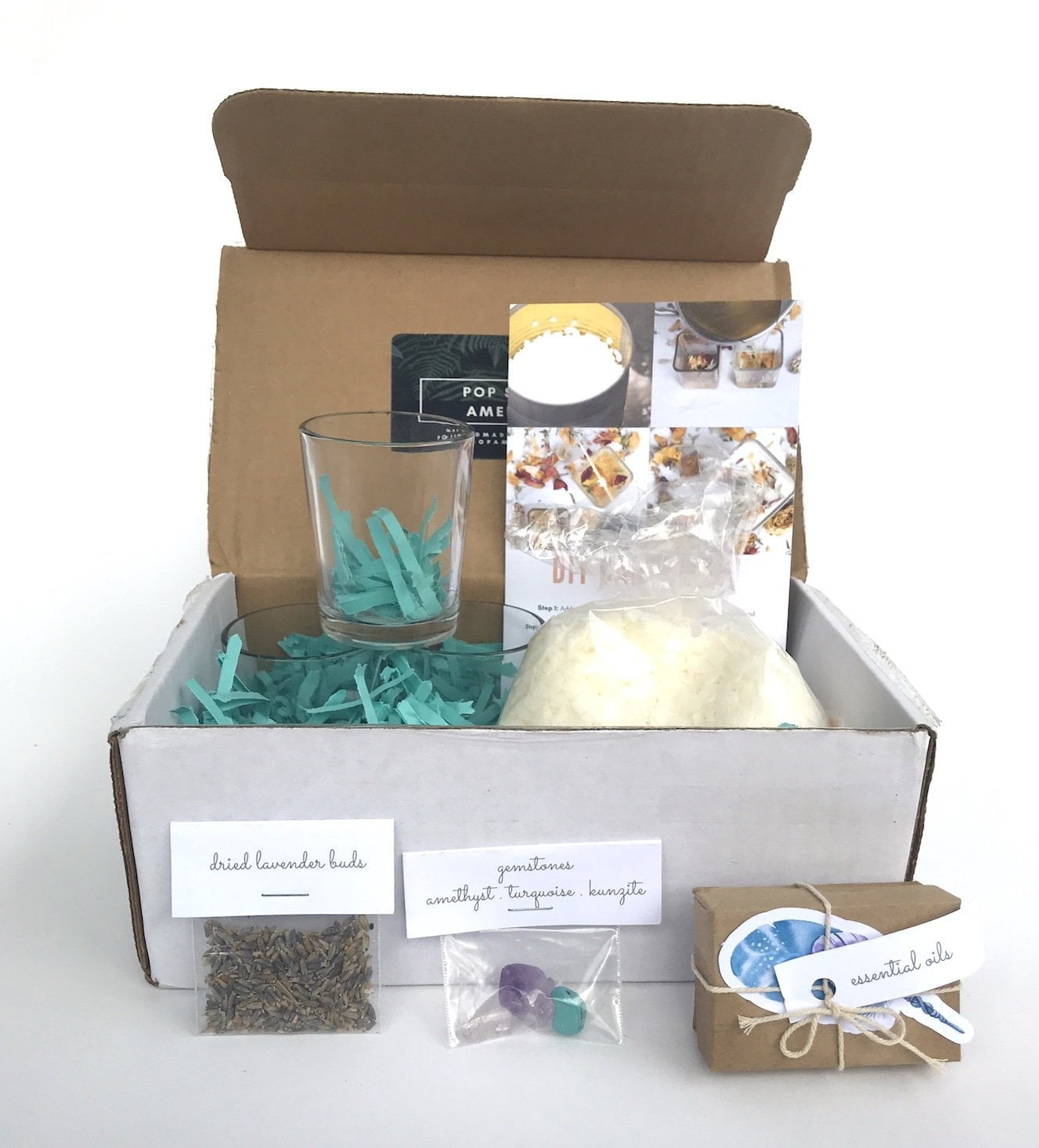Candle making is a fascinating and lucrative business that has been gaining immense popularity in recent years. From the soothing glow of candlelight to the enchanting aromas that fill a room, candles have become more than just household items; they have become an integral part of our daily lives. In this blog post, we delve into the captivating world of candle making, exploring its history, significance, and potential as a thriving business.
The art of candle making dates back centuries and holds a significant place in human history. From providing light in ancient times to symbolizing hope and celebration, candles have always held a special place in various cultures around the world. As we unravel the rich history and evolution of candle making, we will discover how it has transformed from a necessity to an exquisite craft.
Today, the demand for high-quality candles continues to rise as people seek solace and comfort in their homes. With advancements in techniques and materials, candle makers are now able to create unique scents, designs, and textures that cater to diverse consumer preferences. The booming popularity of natural and organic products further amplifies the market potential for those looking to venture into the candle making business.
Join us on this exciting journey as we explore every aspect of candle making – from its historical roots to the science behind creating beautiful candles. Whether you are considering starting your own candle making business or simply curious about this enchanting craft, this blog post aims to provide valuable insights and inspiration for everyone intrigued by the magic of candles.
Unveiling the Art of Candle Making
Candle making is an ancient art that dates back thousands of years. The use of candles can be traced back to ancient civilizations such as the Egyptians, who used candles for religious rituals and lighting purposes. In fact, the word candle itself comes from the Latin word “candela,” which means “to shine.” Candles have played a significant role in human history, providing light during times when electricity was not yet available.
Throughout centuries, candle making techniques have evolved significantly. In ancient times, candles were made by dipping a wick into melted wax repeatedly until it had accumulated the desired thickness. This method was time-consuming and labor-intensive. However, with advancements in technology and the discovery of new materials, candle making techniques have become more efficient and innovative.
The significance of candles extends beyond their practical use as a source of light. Candles hold cultural and symbolic importance in various societies around the world. For instance, candles are widely used in religious ceremonies and rituals across many faiths. They are also associated with celebrations such as birthdays and anniversaries. Additionally, candles have been used to create a tranquil ambiance for relaxation or meditation purposes.
The Science Behind Candle Making
Candle making is not just an art, but also a science. In this section, we will uncover the fascinating world of candle making materials and techniques. Understanding the science behind candle making is essential for creating high-quality candles that burn well and have a long-lasting fragrance.
One of the key materials in candle making is wax. There are several types of waxes used in candle making, including paraffin wax, soy wax, beeswax, and gel wax. Each type of wax has its own unique properties and characteristics that can affect the quality and appearance of the finished candle.
Additionally, fragrances play a crucial role in candle making as they contribute to the overall sensory experience. Candle makers use specially formulated fragrance oils that are designed to be safe for use in candles.
In addition to waxes and fragrances, wicks are another important component in candle making. The size and type of wick used can determine how the flame burns and how evenly the candle melts. Cotton wicks are commonly used in most candles due to their reliability and clean-burning properties. Furthermore, dyes or colorants may be added to give candles their desired hue.
The techniques used in candle making also require careful consideration to ensure a successful outcome. There are three main methods: dipping, pouring, and molding. Dipping involves repeatedly dipping a wick into melted wax until multiple layers build up on the wick to form a tapered shape. Pouring involves melting wax and pouring it into containers or molds with pre-attached wicks. Molding refers to filling pre-made molds with melted wax to create various shapes and designs.
Temperature plays a crucial role in achieving desirable results when it comes to candle making. During different stages of production, such as melting the wax or adding fragrances and dyes, maintaining the correct temperature is essential for optimal results. Fragrance blending is another important aspect as it requires careful measurement and blending of different fragrance oils to create the desired scent. Lastly, choosing the right color for candles can enhance their overall aesthetic appeal.
Understanding the science behind candle making not only allows candle makers to create beautiful and fragrant products but also helps in troubleshooting any issues that may arise during the process. It is through this combination of materials and techniques that candle makers are able to unleash their creativity and produce candles that provide a delightful sensory experience for consumers.
Uncovering the Market Potential
The candle making industry is not just a craft or hobby; it is a thriving business with immense market potential. In this section, we will delve into the current market trends and demand for candles, explore various target markets and niches within the industry, and discuss the potential for growth and profitability in the candle making business.
One of the factors contributing to the thriving nature of the candle making industry is the increasing popularity of candles among consumers. Candles are no longer limited to their traditional use as a source of light; they have become an essential home decor item and a popular gift choice. As people seek to create cozy and inviting spaces in their homes, scented candles have gained immense popularity for their ability to enhance ambiance and create a relaxing atmosphere.
The market demand for candles extends beyond residential settings. The hospitality industry, including hotels, resorts, spas, and restaurants, also offers significant opportunities for candle makers. These businesses often utilize candles to create an inviting ambiance that enhances their guests’ overall experience. Additionally, event planners and wedding organizers frequently incorporate candles into their designs, further expanding the market potential.
To tap into these diverse markets successfully, it is essential for candle makers to identify their target audience and develop niche products tailored to their preferences. For example:
- Natural soy or beeswax candles may appeal to environmentally conscious consumers.
- Luxury brand collaborations can target high-end clientele looking for unique and premium products.
- Aromatherapy-focused candles can cater to those seeking stress relief or relaxation.
- Personalized or custom-made candles can attract customers looking for personalized gifts or customized home decor items.
Furthermore, there is ample room for growth in the candle making industry. With continuous innovation in fragrance development, wax formulations, artistic designs, and packaging options, creative entrepreneurs can carve out their own niche in this competitive market. By staying updated with consumer trends and investing in marketing strategies that effectively reach target audiences through social media platforms, online marketplaces, and participation in craft fairs and events, candle makers can expand their customer base and maximize their business growth.
Overall, the candle making industry offers a vibrant and lucrative business opportunity for aspiring entrepreneurs. With the right combination of creativity, quality craftsmanship, targeted marketing, and an understanding of consumer preferences, individuals can establish successful candle businesses that cater to the evolving demands of modern consumers.
Starting Your Own Candle Making Business
Starting a candle making business can be an exciting and fulfilling venture. Not only does it allow you to express your creativity, but it also offers the potential for growth and profitability in a booming industry. If you’re considering starting your own candle making business, there are several key steps and considerations to keep in mind.
Kickstarting Your Business
The first step in starting your candle making business is to develop a comprehensive business plan. This plan will serve as a roadmap for your venture, outlining your goals, target market, pricing strategy, marketing plans, and financial projections. It will also help you secure funding if necessary and prepare you for any challenges that may arise.
Once you have a solid business plan in place, you’ll need to acquire the necessary supplies and equipment for candle making. This includes selecting the right waxes, fragrances, dyes, wicks, molds or containers, and packaging materials. Investing in high-quality materials is essential to ensure that your candles meet customer expectations and stand out in the market.
Determining Your Business Model
Next, you’ll need to decide on the most suitable business model for your candle making venture. Depending on your resources and preferences, you can choose between operating from home, establishing an online store or selling through a retail shop.
Operating from home offers convenience and cost savings but may have limitations on production capacity. Starting an online store allows you to reach a wider audience without the overhead costs of a physical store but requires strategic marketing efforts to generate traffic and sales. Opening a retail shop provides a dedicated space for showcasing your candles but involves higher initial investments and ongoing expenses.
Regardless of the chosen model, it’s crucial to comply with legal and regulatory obligations. This includes obtaining any necessary permits or licenses required by local authorities and implementing safety measures such as proper labeling of candles regarding burn time, safety warnings, and ingredient information.
Marketing and Branding
To succeed in the candle making business, effective marketing and branding strategies are essential. Creating a unique brand identity will help you differentiate yourself from competitors and attract customers. Consider developing a compelling brand story that communicates your values, inspiration, and commitment to quality.
Invest in well-designed packaging that reflects your brand aesthetic and catches consumers’ attention. Consider collaborating with influencers or attending craft fairs to reach a wider audience. Social media platforms can also be powerful marketing tools for showcasing your candles, building an online community, and engaging with potential customers.
By following these key steps and considerations, you’ll be well on your way to starting your own successful candle making business. Remember to stay passionate about your craft, stay informed about industry trends, and always strive for continuous improvement in product quality and customer satisfaction. With dedication and creativity, the opportunities in the candle making industry are limitless.
Building Your Candle Brand
Building a brand is essential for any business, including candle making. In this section, we will explore the importance of branding in the candle making business and discuss strategies for creating a unique identity that helps your candles stand out in the market.
The Importance of Branding
Branding plays a crucial role in attracting customers and distinguishing your candle products from competitors. A strong brand not only helps you establish credibility and trust but also creates an emotional connection with your target audience. When customers associate your brand with positive experiences and high-quality products, they are more likely to become loyal, repeat buyers.
One key aspect of branding is developing a unique identity that reflects the values and characteristics of your candle business. Your brand should communicate what sets you apart from others in the market, whether it’s through the design, packaging, or scents of your candles. By investing time and effort into creating a distinct brand persona, you can differentiate yourself from competitors and leave a lasting impression on customers.
Creating a Unique Product Line and Appealing Packaging
To build a strong candle brand, it’s crucial to offer a unique product line that stands out from the crowd. Consider experimenting with different scents, shapes, sizes, and designs to create candles that are visually appealing and enticing to potential customers. Conduct market research to identify popular trends or gaps in the market that you can capitalize on with your unique offerings.
Additionally, thoughtful packaging can greatly enhance the perception of your candle brand. Use eye-catching labels or containers that reflect your brand image and appeal to your target market. Incorporate storytelling elements into your packaging to create an emotional connection with customers.
Marketing Strategies for Candle Makers
No matter how exceptional your candles are, they won’t sell if people don’t know about them. Marketing plays a critical role in building awareness and driving sales for your candle making business. Here are some strategies to consider:
- Establish an online presence: Create a visually appealing website or e-commerce store that showcases your candle products. Leverage social media platforms like Instagram, Facebook, and Pinterest to engage with potential customers and share captivating visuals of your candles.
- Collaborate with influencers: Partnering with influencers in the lifestyle, home decor, or wellness space can help increase brand exposure and credibility. Influencers can provide authentic reviews or showcase your candles in their content to reach a wider audience.
- Attend craft fairs and markets: Participating in local craft fairs or markets allows you to connect directly with potential customers and receive immediate feedback on your candles. This also provides an opportunity to build relationships with fellow artisans and gain exposure within the community.
By focusing on branding, creating unique products, and implementing effective marketing strategies, you can successfully build a candle brand that stands out in the market and attracts loyal customers. Remember that building a brand takes time and consistent effort, but the rewards can be significant in terms of business growth and success.
Overcoming Challenges
Running a candle making business can be both rewarding and challenging. While the candle making industry offers immense potential for growth and profitability, entrepreneurs must navigate through common hurdles to ensure success. In this section, we will explore some of the challenges frequently faced by candle makers and provide practical solutions to overcome them.
One of the primary challenges in the candle making business is managing costs. Sourcing quality materials like waxes, fragrances, wicks, and dyes can be expensive, especially when starting out. It is essential to find reliable suppliers who offer competitive prices without compromising on the quality of the materials. Additionally, optimizing production processes and streamlining operations can help minimize wastage and reduce overall costs.
Competition is another significant challenge in the candle making industry. With numerous established brands and new entrants constantly entering the market, standing out from the crowd becomes crucial. Creating unique product lines with innovative designs or specialized scents can set your candles apart. Investing in research and development to consistently update your offerings with new trends and customer preferences will also help you stay ahead of competitors.
To effectively tackle competition, extensive market research is vital to identify niche markets within the candle industry. Targeting specific demographics or lifestyles can help you tailor your products to meet their needs more precisely. For example, focusing on eco-friendly candles made from organic materials could appeal to environmentally conscious consumers.
The quality of your candles plays a vital role in building a successful candle making business. Poorly crafted candles could lead to dissatisfied customers and damage your reputation. Quality control measures should be implemented at every stage of production – from selecting high-quality raw materials to ensuring proper temperature control during melting and pouring processes.
| Common Challenges | Solutions |
|---|---|
| Managing costs | – Find reliable suppliers with competitive prices
|
| Competition | – Create unique product lines with innovative designs or specialized scents
|
| Quality control | – Select high-quality raw materials
|
Success Stories
The candle making industry has witnessed the rise of many successful entrepreneurs who have carved a niche for themselves in this thriving business. These individuals have not only achieved significant milestones but also serve as a source of inspiration for aspiring candle makers. Their stories reflect the dedication, creativity, and perseverance required to succeed in this competitive industry.
One such success story is that of Sarah Johnson, founder of Luxe Candles. Sarah started her candle making journey as a hobbyist, crafting candles as gifts for family and friends. Little did she know that her passion would eventually turn into a flourishing business.
With her eye-catching packaging, unique fragrances, and attention to detail, Luxe Candles quickly gained popularity among candle enthusiasts. Today, Luxe Candles can be found in numerous retail stores across the country and has garnered a loyal customer base.
Another inspiring entrepreneur is Michael Thompson, founder of Thompson’s Treasures. Like many others, Michael faced initial challenges while starting his candle making business. However, he didn’t let those obstacles deter him from pursuing his dreams.
Through continuous experimentation with different wax blends and fragrance combinations, he was able to create signature scents that set his candles apart from the competition. By leveraging the power of social media marketing and collaborating with influencers in the home decor industry, Michael successfully built a strong brand identity for Thompson’s Treasures.
These success stories highlight the importance of perseverance and innovation in the candle making business. They show how entrepreneurs can turn their passion into a profitable venture by focusing on quality craftsmanship, unique product offerings, effective branding strategies, and building strong customer relationships.
If you’re considering starting your own candle making business, these success stories should serve as an inspiration to follow your dreams. While it may not be an easy journey filled with ups and downs are inevitable, these entrepreneurs have proven that with dedication and creativity anything is possible.
So, take the leap, ignite your passion, and embark on your own candle making journey. Who knows, you might be the next success story to inspire others in this ever-growing industry.
Conclusion
In conclusion, the candle making industry is a lucrative and thriving business that offers endless opportunities for aspiring entrepreneurs. Throughout this blog post, we have explored the art of candle making, delved into the science behind it, and uncovered the market potential for this industry.
Candle making is an ancient craft that has evolved throughout centuries, and its cultural and symbolic significance in society cannot be underestimated. By understanding the materials and techniques involved in creating high-quality candles, individuals can tap into the growing demand for unique and beautifully scented candles.
Starting your own candle making business requires careful planning and consideration of various factors such as business models, legal obligations, branding, and marketing strategies. It is essential to build a unique identity for your brand, create appealing packaging, and explore different avenues for marketing your products effectively.
While challenges may arise in any business venture, it is crucial to address them head-on with practical solutions. Managing costs, competition, product quality, inventory, shipping, and customer service are all key areas that need to be carefully managed to ensure success in the candle making industry.
Finally, we hope that this blog post has ignited your passion for the candle making business. By drawing inspiration from successful entrepreneurs who have achieved significant milestones in this industry, we encourage you to pursue your dreams and turn your passion into a profitable venture. With the right knowledge and dedication, you can tap into this booming market and carve out a successful career in the world of candle making.
Frequently Asked Questions
What category is candle business in?
The candle business is typically categorized under the home goods or home decor industry. This is because candles are often used as decorative items within homes, creating a cozy and inviting atmosphere. Additionally, candles can also be found in gift shops, specialty stores, and even online marketplaces, further emphasizing their connection to the home goods sector.
What industry is the candle industry?
The candle industry can be considered a part of the consumer goods industry. Consumer goods refer to products that are purchased and used by individuals for personal consumption.
Candles fit into this category since they are primarily bought by consumers to enhance their living spaces, create ambiance, or provide fragrance. The candle industry also encompasses various product types, including scented candles, decorative candles, religious candles, and more.
Is candle making a manufacturing business?
Candle making can indeed be classified as a manufacturing business. Manufacturing involves the process of transforming raw materials or components into finished products through various production methods and techniques.
In the case of candle making, this typically involves melting wax, adding fragrance and colorants if desired, pouring the mixture into molds or containers, cooling it down until solidification occurs, and finally packaging the finished candles for distribution. As such, the assembly line-style process required for candle production fits within the manufacturing sector of business operations.

Welcome to my candle making blog! In this blog, I will be sharing my tips and tricks for making candles. I will also be sharing some of my favorite recipes.





